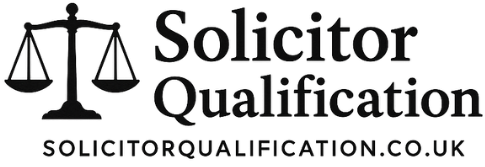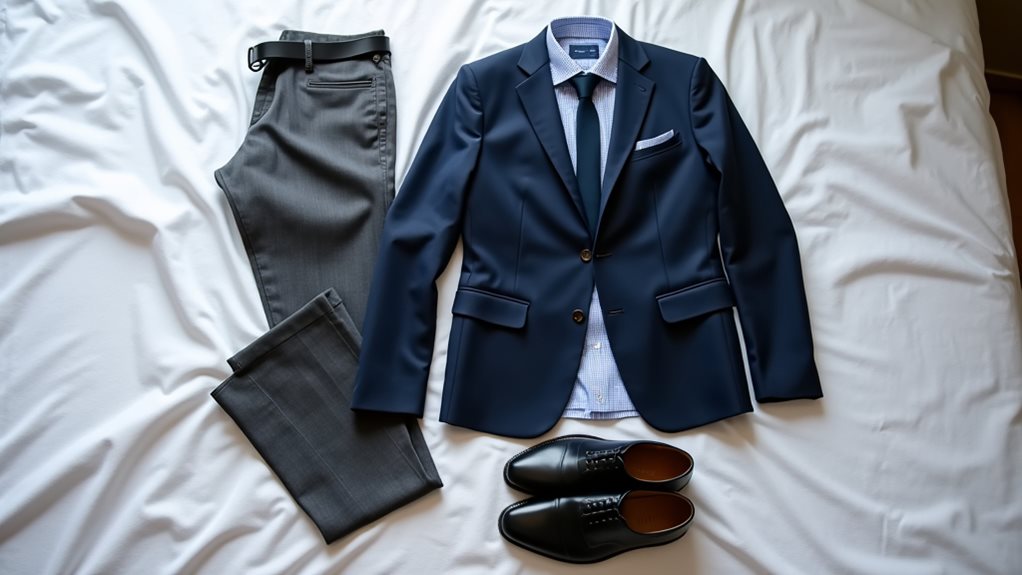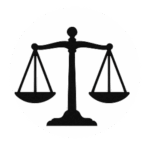For the SQE exam, you’ll want to dress in business casual attire that prioritizes comfort during long testing periods. Choose dark-colored slacks or knee-length skirts paired with modest tops, and layer with a light blazer or cardigan for temperature control. Opt for breathable, wrinkle-resistant fabrics while avoiding distracting jewelry, noisy shoes, or bright colors. Smart preparation of your exam attire can greatly impact your testing experience.
General Dress Code Guidelines for SQE Candidates
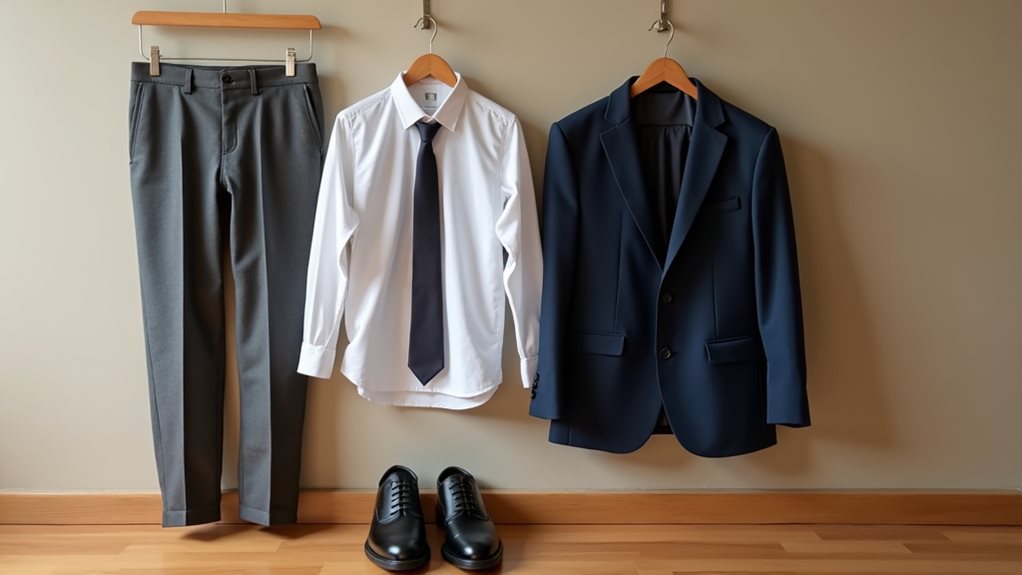
When preparing for the SQE exam, you’ll need to dress professionally and comfortably since you’ll be sitting for extended periods.
Choose business casual attire that allows for easy movement and temperature regulation. Dark-colored slacks or skirts paired with modest tops are among your exam day essentials.
Professional, comfortable attire is key for exam success – opt for dark slacks or skirts with modest tops that allow unrestricted movement.
Your confidence boosting attire should include layers, as exam rooms can vary in temperature. Consider wearing a light blazer or cardigan that you can easily remove.
Select clothes made from wrinkle-resistant fabrics that won’t distract you during the test. Avoid noisy materials like corduroy or items with metal embellishments that might create disruptions.
Remember to wear comfortable, closed-toe shoes that won’t pinch or cause discomfort during the lengthy examination period.
Professional Yet Comfortable Attire Recommendations
Building on the general dress code principles, specific professional attire choices can make a significant difference in your SQE exam performance.
When selecting your exam day outfit, consider a business casual approach that balances professionalism with comfort. Choose breathable fabrics that won’t distract you during the lengthy assessment sessions.
You’ll want to layer your clothing, as exam room temperatures can vary. Consider wearing a blazer or cardigan over a collared shirt or blouse, paired with comfortable dress pants or a knee-length skirt.
Your shoes should be professional yet practical – avoid anything that might become uncomfortable after hours of sitting. Remember that while maintaining a professional appearance is important, your primary focus should be on feeling confident and at ease throughout the examination.
What to Avoid Wearing During the Exam
To guarantee your exam-day success, it’s crucial to understand what clothing items could hinder your performance or violate dress code policies.
You’ll want to avoid any items that could cause discomfort or distraction during the lengthy examination period. Stay away from prohibited items like noisy jewelry, watches with smart features, or clothing with excessive branding or text.
When considering color choices, skip anything too bright or distracting that might draw unwanted attention. Don’t wear heavy layers that you can’t easily remove, as room temperatures may fluctuate.
Avoid tight-fitting clothes that could restrict movement or become uncomfortable after hours of sitting. Additionally, steer clear of shoes that click loudly when walking, clothing with multiple zippers, or accessories that could make noise during the exam.
Dressing for Different Seasons and Test Venues
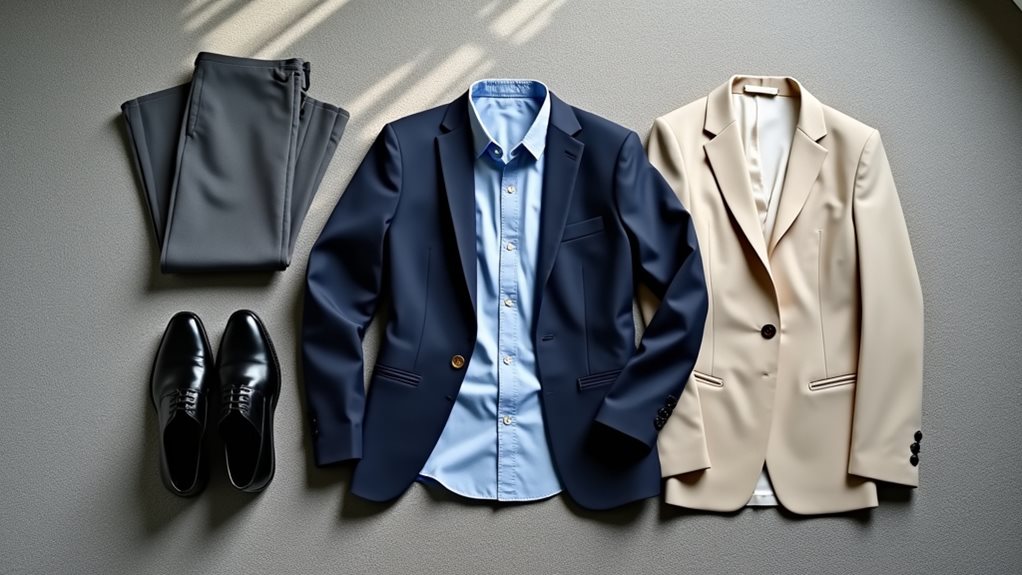
Since exam venues and weather conditions can vary considerably throughout the year, you’ll need to adapt your test-day attire accordingly.
Your choice of seasonal attire should prioritize both comfort and venue appropriateness while maintaining a professional appearance.
- During summer months, opt for lightweight, breathable fabrics like cotton or linen blends, but keep a light jacket handy for air-conditioned rooms.
- For winter testing dates, wear layers that you can easily remove if the venue becomes too warm.
- Consider the specific venue’s environment – some test centers run warmer or cooler than others.
- Always bring a light sweater or blazer regardless of season, as temperature fluctuations are common in exam rooms.
Select clothing that allows you to focus entirely on your exam without physical distractions.
Essential Clothing Tips for Multi-Day Assessments
When preparing for multi-day SQE assessments, planning your wardrobe requires careful consideration to maintain comfort and professionalism throughout the entire testing period.
Pack several interchangeable outfits that you’ve previously worn and tested for comfort. Include a spare set of exam day essentials in case of unexpected spills or temperature changes.
You’ll want to bring layers that you can easily add or remove, such as a lightweight blazer or cardigan.
Select wrinkle-resistant fabrics and comfortable shoes that you’ve broken in well before the exam. To boost candidate confidence, guarantee each outfit meets professional standards while allowing you to focus entirely on your performance.
Remember to check the weather forecast for all testing days and pack accordingly, including any necessary accessories like scarves or light jackets.
Frequently Asked Questions
Are Religious or Cultural Head Coverings Permitted During the SQE Exam?
You can wear religious or cultural head coverings during the SQE exam. The head coverings policy guarantees cultural sensitivity, but you’ll need to show your ears during identity checks before testing begins.
What Happens if I Accidentally Violate the Dress Code on Exam Day?
Like a deer in headlights, you’ll face immediate action if you violate dress codes. You’ll need to correct the issue before entering, or you won’t be allowed to take the exam that day.
Can I Bring a Change of Clothes to the Exam Center?
You can’t bring a change of clothes to the test center due to exam day attire regulations. All your clothing decisions must be finalized before arrival, and storage isn’t provided for additional clothing items.
Are There Specific Dress Code Requirements for Online SQE Assessments?
For online assessment attire, you’ll want to dress professionally but comfortably. While virtual exam guidelines don’t specify strict requirements, it’s best to wear business casual clothing during your online assessments.
Do Candidates Need to Wear Their Student ID Badges During the Exam?
You don’t need to wear a student ID badge during the exam. However, you’ll need to present valid government-issued photo identification that matches your exam registration details, following standard exam regulations.
Final Thoughts
Purposefully planning your professional presentation for the SQE exam will help you perform with poise and confidence. You’ll want to select smart, sensible attire that maintains proper decorum while keeping you comfortable during long testing sessions. Remember to dress in layers, wear practical shoes, and prioritize professionalism over personal style preferences. By following these fundamental fashion guidelines, you’ll be properly prepared to tackle this significant step in your legal career.
